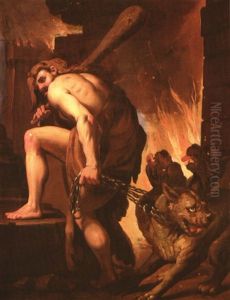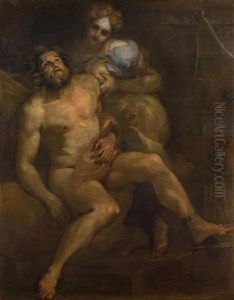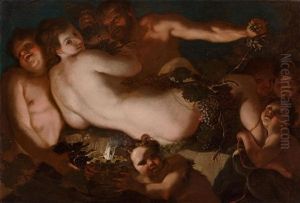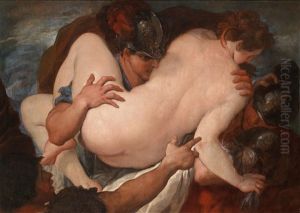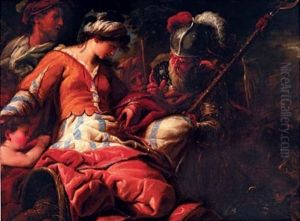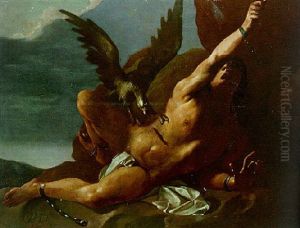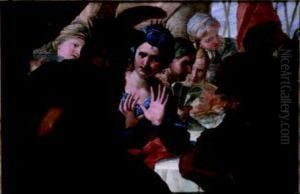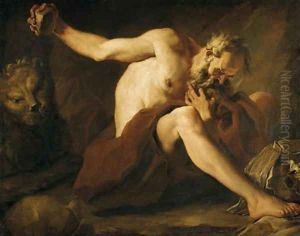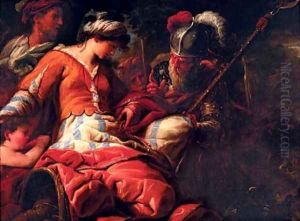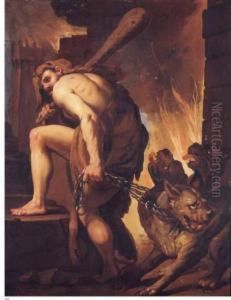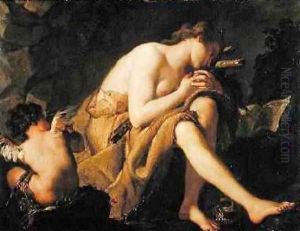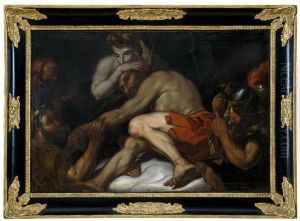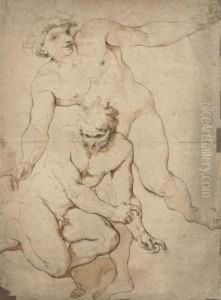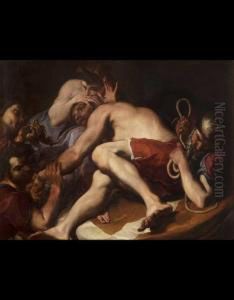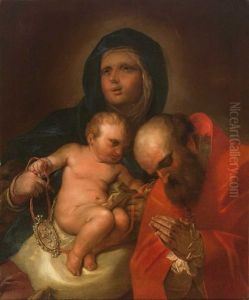Paolo Pagani Paintings
Paolo Pagani was an Italian painter of the late 17th and early 18th centuries, recognized for his work in the Baroque style. Born in Castello Valsolda, a small town near Lake Lugano in the Italian-speaking part of Switzerland, Pagani's date of birth is often cited as 1661. He demonstrated artistic talent early in life, which led him to pursue a career in the arts.
Pagani's initial artistic training took place in Milan, after which he moved to Venice to further his studies. In Venice, he was influenced by the works of the great Venetian masters, particularly the dramatic and colorful style of Paolo Veronese. Pagani's work is characterized by dynamic compositions, a strong use of chiaroscuro, and vibrant color palettes, which were typical of the Baroque movement that emphasized movement, contrast, and emotional intensity.
During his career, Pagani worked on various important commissions throughout Italy. His works include religious and mythological subjects, and he was also known for his frescoes and altar pieces. One of his notable projects was the decoration of the Villa Duodo in Monselice. However, despite his considerable output, Pagani's work was somewhat overshadowed by the more famous artists of his time, such as the Venetian Giovanni Battista Tiepolo.
Paolo Pagani's travels took him across Italy and central Europe, including a significant period in the then Habsburg-ruled territories, where he contributed to the spread of the Italian Baroque style. Pagani's influence was particularly felt in the Czech lands, where he worked at various noble courts and left behind numerous works.
Pagani returned to Italy later in his life and continued to paint until his death in 1716. His legacy, while not as well-known as some of his contemporaries, is still appreciated by art historians and enthusiasts who recognize his contributions to the Baroque movement. His works can be found in churches and museums across Italy and central Europe, serving as a testament to his skill and artistic vision.

